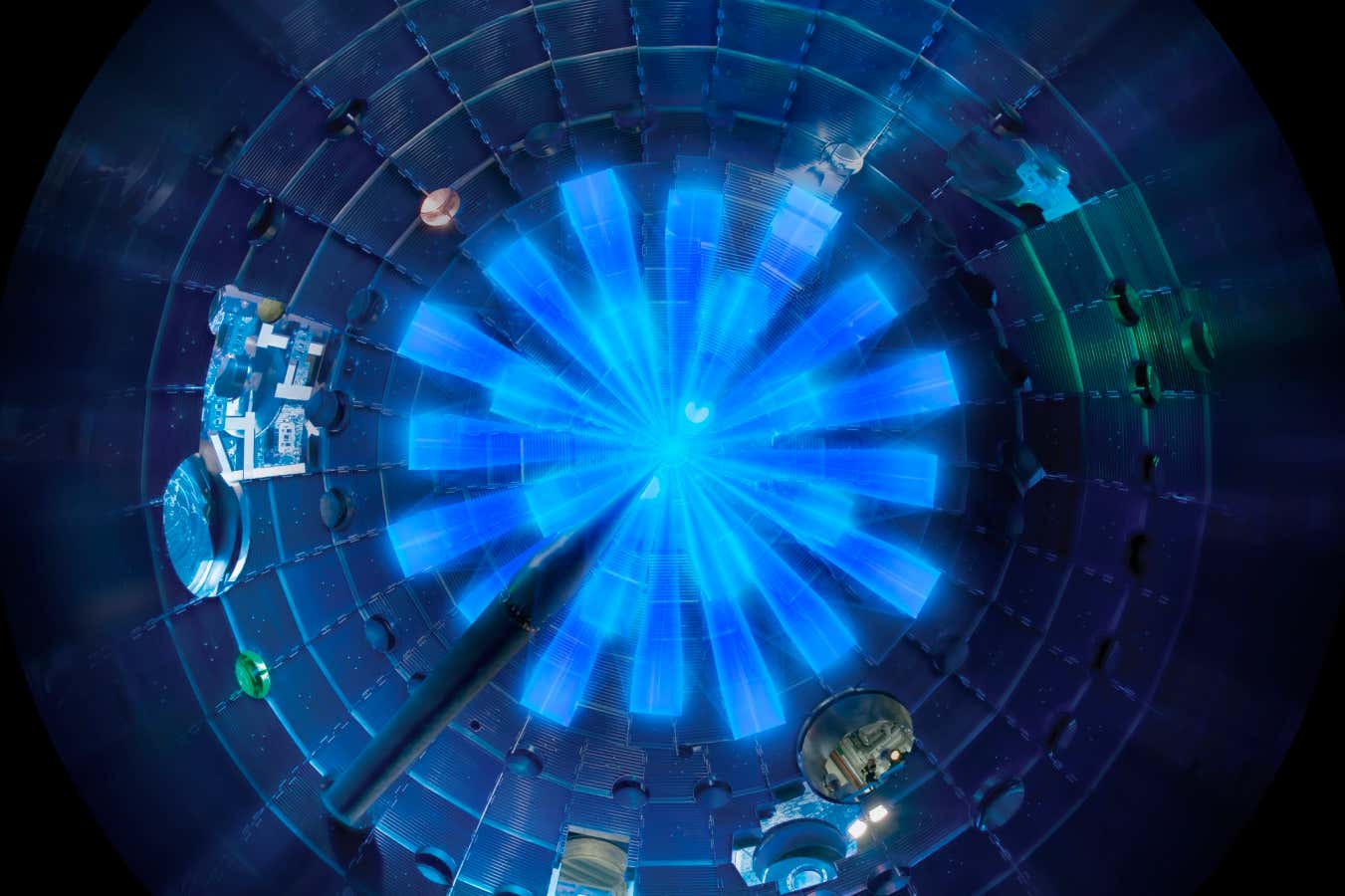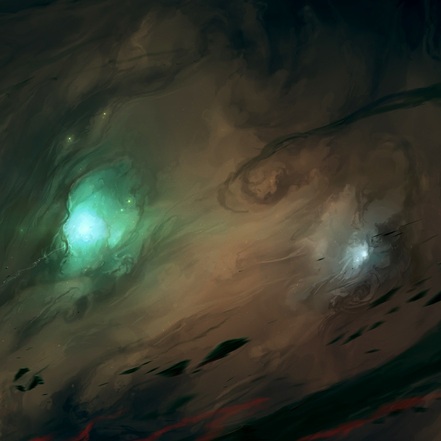Excluding all the ancillary services, including the lasers that maintained the plasma, which was the principle part of this latest test.
Factoring everything in, they’re at about 15% return.
This is still very good for this stage, but the publications are grossly misleading.
I want to add that experimental reactors used for scientific research might never become net energy positive and that would be fine. Their purpose isn’t to generate profit, it’s to learn more about the physics, so it will be more valuable for them to be adaptable than efficient.
However, that doesn’t mean that you can’t take a configuration that has been shown to have potential and make a reactor that is more efficient than adaptable and use that to generate power for the electrical grid.
Basically, they have two different purposes.
Absolutely. Also, the fact that the reactor was only running for a short time plays a part. Usually there is a significant energy cost in starting and stopping, which is offset by running for a long time. However, these reactors are not designed for continued running.
It’s all a process of development, and even though the article is perhaps a little sensationalist, they’re making good progress.
but the publications are grossly misleading.
I think you’re only referencing the headline, the article itself clearly states what you said
Is the headline not part of an article?
When one says a publication is grossly misleading, it certainly implies the entire publication
Often the author doesn’t write he headline. Not sure it matters but most a bit of info.
You’re not wrong, but we also should stop excusing, normalizing, and accepting wildly exaggerated for sales purposes titles of articles.
We should stop accepting lies.
Unless there is some way this reaction actually did produce twice the energy input, it’s not misleading it’s a lie.
Why have we accepted the standard of misleading headlines? “Oh well you didn’t read the article, I guess you and 90% of eyeballs get to be fundamentally misinformed” is an unhinged take.
I never said a misleading headline was acceptable. I said the publication is not misleading and that it covers the criticisms dude up above was leveling.
It is misleading, for someone to be misleading they must mislead, and the headline misleads.
The headline is part of the publication though.
No, this is a popular science article, not an actual publication.
“article” vs “publication”
Two different things.
The link takes you to an article. Publications are in actual scientific journals, not intended for popular consumption.
What was your question? I only read “is the” and thought I could base my response off of only that.
When I see “publication” I assume it’s the actual scientific paper and not the article reporting on said paper.
That’s a great point. I absolutely agree with you on that.
It’s easier to nitpick than it is to interact with the actual argument.
I agree with you. The headline is misleading, and I think it devalues the article.
Generally no
Lol ok
The publications are not misleading, just these headlines.
That’s what I came to the comments to find. Thank you. Would have been much bigger news if it was net energy positive.
15% return is still net energy positive isn’t it? Or is that not 15% above the input?
From another article: “In an experiment on 5 December, the lab’s National Ignition Facility (NIF) fusion reactor generated a power output of 3.15 megajoules from a laser power output of 2.05 megajoules – a gain of around 150 per cent. However, this is far outweighed by the roughly 300 megajoules drawn from the electrical grid to power the lasers in the first place.”
That’s worded strangely (powering the lasers takes both 300 and 2.05 megajoules?) but oof
Powering the laser takes 300 MJ but the actual laser power (the energy in the light) is only 2.05 MJ. The rest of the energy is lost to heat and other inefficiencies. If the laser could be created with 100% efficiency then the input energy would also be 2.05 MJ.
Energy can be measured as occurring in different physical phenomena. There is energy in sound waves/packets, energy in light waves/packets, energy in matter, etc.
The 300 MJ number refers to the electrical energy in the form of electromagnetic fields carried specifically through solid conductors via electron movement along the conductors.
The 2.05 MJ number refers to the radiative energy in the form of electromagnetic fields sent specifically through free space/a vacuum (I presume; I didn’t read the article, so maybe the laser medium was a vacuum or something else) via photons/waves. No electrons, aside from those in the lasers that create the photons in the first place.
So there is a conversion from electric to radiative energy here.
Start Edit:
And as another commenter said, in this conversion there are losses because materials aren’t perfect.
:End Edit
If the 3 MJ radiant energy from the nuclear material was then converted back into electric energy via steam processes, we’d get a comparable number compared to the 300 one.
This is also why you see nuclear/CSP plants quoted in MWt and MWe: there is a conversion that takes place from thermal energy (vibrations of atoms/compounds) into electric energy.
I can’t read the full article (paywalled for me) but it references the National Ignition Facility so the way it goes is super lasers blast a tiny hydrogen thing and that creates a tiny bit of fusion that releases the energy. The energy of the laser blast is what’s being called the input and the fusion energy released the output. What is misleading is that a greater amount of energy was used create the laser blast than the laser blast itself outputs. If you consider the energy that went into creating the laser blast the input (rather than the laser blast itself), then it’s usually not a net positive energy release.
What other energy are you referring to? Like warming up the laser?
Remember when incandescent light bulbs were the norm? They worked by sending full line voltage through a tiny tungsten wire that would get so hot that it glows, making some light, but 95% of the energy that gets consumed is frittered away as heat? The high-power lasers needed to make fusion happen are a lot like that.
I believe all this article is saying is that 15% more energy than what came out of the lasers as useful laser light was liberated in the reaction.This completely ignores the energy it took to power those massively inefficient lasers.
I think it also ignores the fact that the 15% more energy liberated wasn’t actually, like, harnessed by a generator. I believe (and I may be wrong) this was testing only the reaction itself. Actually hooking that up to a turbine and using it to create energy that is cost competitive with contemporary sources is still a completely unsolved problem.
pixelscript@lemmy.ml got it, but basically lasers are pretty inefficient. The article I just found said (in a different run of this facility) they put 400MJ into the laser to get 2.5MJ out of it. So that makes the whole firing system what, 0.6% efficient? Your fusion reaction would have to give more than 400MJ to truly be in the positive for this particular setup/method, but again this facility is a research one and not meant to generate power - there isn’t even a way to harness/collect it here.
Oh so the laser’s generating mostly heat and a little coherent radiation, and they’re only referring to the coherent radiation as the “energy input” to the process.
Hmm. Kinda sketch.
Especially because that’s not trivial. If we have no way of obtaining laser light other than that process, and the laser is the only way to feed the fusion reactor, then that’s 100% on the balance books of this process.
Thx. Rip tho
If anything has been consistent about fusion its always them desperately trying to spin babysteps and monumental leaps forward and trying to make themselves seem super clean and safe especially compared to fission.
If anything has been consistent about fusion its always them desperately trying to spin babysteps and monumental leaps forward
That’s usually the media outlets sensationalising the results to the point where the articles are grossly misleading.
trying to make themselves seem super clean and safe especially compared to fission.
That’s just a fact, no need to try. The Fusion process is inherently safe the radioactive byproducts are generally short lived and easier to handle.
If publications keep misreporting your work, stop talking to them, and see different publications with a stronger commitment to the truth.
Fusion is not inherently safe. It has significantly higher rate of neutron discharge for the enegy produced which can damage the reactor vessel and potential to cause nonfuel material to become radioactive.
Ontop of any power disruption of the system has the potential for radioactive plasma to escape with nothing even remotely equivalent of a SCRAM to bring it back under control.
The only reason fusion appears safe right now is because its all still developmental phase and any issues are being handwaved as prototyping issues and not treated like the actual potential catastrophes they are.
The total mass of reactants in the fusion chamber is below milligram, some of which is bound in stable isotopes. Even if all of it escaped, it would be far from catastrophic.
The reaction itself cannot run away on its own because it requires a delicate balance in temperature and density, which will be immediately disturbed if there was a breach in containment.The walls will be activated by neutrons, but short of blowing the reactor up, there’s not much chance of materials escaping in a significant amount to pose a danger.
Just for comparison: The nuclear safety requirements of a fusion reactor are ballpark those of the radiology department in your local hospital: An accident will give you, if you’re unlucky, a dose on the order of a dental x-ray. Decommissioning involves letting it sit there for 100years until it has cooled down to ambient radioactivity levels, if you’re cheeky you could send it to a place where the natural radiation levels are higher and declare it cool much faster.
Why does noone talk about those ludicrously strong magnet fields and gigantic vacuum vessels? You’re standing right next to a massive volume of practically nothing and are worried that something leaks out?
Sigh, here we go, the propaganda is already starting lol
Fusion reactor SLAMS surprised scientists with it’s INCREDIBLE output
You’ll never believe what they do next!
What happens in the reaction at the 69th microsecond will shock you!
Fusion engine stuns EV industry!
With this weird little device you can do that at home I’m 90 seconds!
No, really, you can.
The end 😂😂😂
Scientists RIP stubborn atoms for bad faith energy negotiation policy.
Firstly, the energy output falls far short of what would be needed for a commercial reactor, barely creating enough to heat a bath. Worse than that, the ratio is calculated using the lasers’ output, but to create that 2.1 megajoules of energy, the lasers draw 500 trillion watts, which is more power than the output of the entire US national grid. So these experiments break even in a very narrow sense of the term.
It’s so refreshing to see an article at least mention the way these tests are measured are based on the energy just in the laser itself and not the total energy used.
I agree it’s good that the article is not hyping up the idea that the world will now definitely be saved by fusion and so we can all therefore go on consuming all the energy we want.
There are still some sloppy things about the article that disappoint me though…
-
They seem to be implying that 500 TW is obviously much larger than 2.1 MJ… but without knowing how long the 500 TW is required for, this comparison is meaningless.
-
They imply that using more power than available from the grid is infeasible, but it evidently isn’t as they’ve done it multiple times - presumably by charging up local energy storage and releasing it quickly. Scaling this up is obviously a challenge though.
-
The weird mix of metric prefixes (mega) and standard numbers (trillions) in a single sentence is a bit triggering - that might just be me though.
Electricity stuff is funny because it combines metric and imperial units sometimes to make bastard measurements
Huh? Whatchu talkin bout Willis?
Watt is a Joule per second
Volts, Amps, kWh, MJ… These are all metric.
Sssch don’t tell the Americans or they will try to wrangle in BTU in nuclear power plants
WE INVENTED IT AND BUH GAWD, WE WILL MEASURE IT IN MURICA UNITS!
Ignore how nonsensical BTUs are: Gonna shove energy and weight into a single measurement and it changes based on the initial temperature of the water.
Or HVAC uses tons of ice needed to cool something. Euroguys probably don’t have air conditioners, just that tilt window technology.
I do like the obscure AWG scale especially 0000
lol tilt windows
Y’all do know what BTU stands for, right?
British Thermal Units. It’s the energy needed to heat 1 lb of water 1 degree F.
The bad part is that no one bothered to set the starting temp of the water so there’s 5 separate standards for what the hell a BTU actually is, which makes it a really bad standard.
In a number of instances where there is not a standard in place already it is not uncommon to see metric measurements mixed with imperial or US customary measurements.
I’m not in any way shape or form claiming that ALL of it is mixed.
However what does actually happen is the a unit of measure might be mixed with a customary one and then that becomes the defacto measurement, you may see wire resistance shown as a mix of Ohms/1000ft.
I am not getting into an argument about the merits of metric, I’m on board, I am with you. That doesn’t mean there aren’t some silly oddballs.
Is their an imperial equivalent to ohm?
It might be the case that imperial resistance is ohm the same as metric. Metric uses ohm as it’s constituent with base units of metric, but imperial doesn’t abide by rules like that.
If you had to make a imperial equivalent to resistance, it would be a fraction of the resistance of the monarchs finger.
Until we actually electrocute a king there probably won’t be
There’s no non metric electrical units except ohms/1000 ft or cross section dimensions, and AWG (and MCM kilo circular mils kcmils) versus mm^2
Why US uses awg with reverse scale instead of diameter is insane
formula: D(AWG) = 0.005·92^((36-AWG)/39) inch
Yeah electricity is weird because Americans use metric for it. And it’s that way because metric predates it
Fun fact: While metric predates our full understanding of electricity, our understanding of electricity played a key role in the definition of the SI units.
As I understand it, the reason the SI unit for mass is kg not g - making it an outlier to my mind - is so that electical engineers could keep volts and amperes as convenient numbers.
Long read: https://arxiv.org/abs/1512.07306
-
Still, from an acorn grows a massive tree.
Exactly. These tests aren’t meant to create a practical solution, but to provide knowledge and insight that a) it is possible and b) exactly what is necessary to make it happen, at a physical level. Before this, it (more out than in) was all theory, but now we’re got some hard data to work with.
That’s a big step we’ve been chasing for a long, long time.
Yeah, and a good sign is that the countries with money to invest in the race all seem to be convinced we’ve got the science right and that the engineering challenges are solvable. There have been so many records broken recently we’re getting towards the end of the mile stones, hopefully soon we’ll start hearing about self sustaining experiments with records for how long they ran
That, is not an illusion, Master Oogway.
At some point we’ll be able to say: …and thus, humanity created its first star.
…and accidentally incinerated its home world, as the supply dependant lunar colony could only look on in horror.
✨The End✨
I know you’re joking, but nuclear fusion is inherently safe because if it breaks there is no way to sustain a chain reaction. And is only creates mildly radioactive byproducts. So you could blow it up and it wouldn’t seriously contaminate the area.
Not only are the radioactive byproducts not that dangerous (everything is relative of course). But also they have incredibly short half lives so they go away long before the firefighters turned up.
Technically fission has a similar physical barrier to infinite meltdown. Once the water leaves the core, the reaction stops. It was called China Syndrome, and we wouldn’t have worried about it at all, had the physicist that thought it up been a bit more competent with his math skills. Unfortunately, there are plenty of other ways that the reactors that we currently use can catastrophically fail.
Nah, the Earth doesn’t have enough mass to become a star. If it did, it would already be one.
I mean, no, it also doesn’t have enough hydrogen.
Everything’s hydrogen if split enough ¯\_(ツ)_/¯
But we’re talking fusion
When they do they should come up with some original quote.
“The power of the sun in the palm of my hand”, something like that.
At least they won’t be in danger of falling flat on the ground, halfway through their Big Words, due to muscle atrophy, the way every single other “first person on ______” is gonna have
“That’s one small trip and fall for a human, one giant faceplant for mankind.”
Melts Your Mouth, Not Your Hand
And directly started demanding money to use some of it.
Maybe one day we will produce a civilization capable of using technology as it comes out instead of one that decided to call it quits decades ago. Oh sure we got cellphones but we are still burning coal. Because nuclear is scary.
I think nuclear energy is a great idea in theory, but I have absolutely zero trust in companies handling nuclear waste responsibly. It’s not like they have a great track record.
That being said, pretty excited about this if it’s as safe as they say.
So nationalize them. Problem solved.
You have every right to not trust companies, I don’t either. Good thing we have multiple government regulators and multiple non-profit engineering/standards boards also involved.
That’s why there were no incidents in Japan a decade ago. Especially not after multiple reports of potential danger 🤷♂️.
I have the same reserves as the person you commented on. “We” may have great agencies working to prevent issues, but it’s not the case everywhere in the world. And if you want to use fission as a solution for climate change, you need to have every developing country to use it too, whatever the stability of the region.
Just look at Ukraine where the safety of one their reactor is on the line because of the war, and the mines Russia put all over. Chernobyl 2.0 if things go wrong :(
Sure, I just want to feel confident that said regulations actually have teeth and the punishment can’t just be factored into the cost of doing business.
So, yes, I’m scared. Maybe that’s not rational, but I don’t want to look back in 40 years and find out we were wrong about the longevity of nuclear waste storage, or that the many minor infractions over the years have slowly built up into a real problem. I don’t want to discover that we’ve been outsourcing the most dangerous work to developing countries with less employee and environmental protections than our own. If there’s a viable method that’s inherently safer, I’d feel a little better about it.
From what I recall of Three Mile Island, I don’t know that I’d put a lot of trust in the NRC.
I’m pretty sure Three Mile Island is more of a case study in how safety measures at nuclear plants can work.
Except it took a whistle blower to point out the reckless behavior during the clean-up to prevent a potential catastrophic event when the NRC was all for signing off on the reckless plan. That, plus the poor communication with the surrounding communities did not help the people there feel confident that their safety was being looked after
It’s not been uncontested through out history, and I won’t pretend that I follow the updates closely, but there have been studies suggesting increased cancer rates in the surrounding communities.
Except it took a whistle blower to point out the reckless behavior during the clean-up to prevent a potential catastrophic event when the NRC was all for signing off on the reckless plan.
+50 years ago
Boy, you are just really bothered by this. Why does it being 50years ago matter. Can you explain why we should trust them more today than we should have then?
I bet on the day Three Mile Island had the meltdown, hundreds if not thousands of people died due to emissions from coal power.
The issues with fission are issues with practically. It’s expensive, pretty much. Concerns about meltdowns or waste storage are discussions that need to happen, but they pale in comparison to the damage we already experience every day.
Hopefully small modular reactors will get popular in remote areas or industrial uses, and that will bring down the price to make them a feasible compliment to renewable energy.
I mean no one died and it seems like most studies find few to no significant adverse long term health effects from the event.
I see. So because of an incident five decades ago out of hundreds of plants running since the 1950s that resulted in no deaths the entire NRC for all time forever is untrustworthy.
Hey everyone go shut civilization down. The bar has been raised. Did an organization make a mistake that had no victim 51 years ago? This means it is destroyed forever. Only perfect people who act perfectly forever and into the past as far as you can look get to do anything.
Got to love this new world. Where the only thing that is real is our outrage. Can you tell me anything about the NRC? Can you describe their emblem without looking it up? Can you tell me who is running it now? Can you tell me about its organization structure? How about the license renewal process? How about how inspections are even performed? Betting no. But you don’t need to, you have outrage and that replaces data. It is the master play that can never be defeated. As long as you can be upset about something you don’t need to know anything.
There are people who are grandparents who weren’t alive during that incident.
With respect, you are the one that seems outraged. I’m not outraged, just pointing out that government can be just as untrustworthy as corporations and in the case of the NRC, there is some history to justify that.
Government agencies generally should be looked at with critical eyes, as should anyone claiming power over your life.Also, you claimed there were no victims. The fact that no one died in the immediate aftermath of TMI does not mean there were no victims. The surrounding communities were victimized by poor business decisions and poor oversight.
there is some history to justify that.
Emphasis on “some”.
Also, you claimed there were no victims. The fact that no one died in the immediate aftermath of TMI does not mean there were no victims. The surrounding communities were victimized by poor business decisions and poor oversight.
Do you think pedantically going after one word I said will make your pro-coal agenda work?
I just thought it was worth recognizing that there were victims as my point in my original post was regarding the trustworthiness of those that are supposed to be looking out for the people. And I guess I’m not sure where I’ve pushed coal, but you do you, I guess.
Peace and love to you, Zombies
Well, that’s why you put well funded, independent organizations in charge of setting and enforcing the rules around this kind of stuff
And you don’t just give them the power to fine the companies exploiting the reactors, you give them the power to unilaterally decide to shut down the reactors if they deem it necessary
We’re currently trusting them to deal with all the filth that comes out of fossil fuel based power facilities. There’s a lot of very long lived awful waste that is produced.
Because nuclear is scary.
Nuclear isn’t scary. It’s waste, on the other hand, is.
But you know, it’s not like we’ve not had multiple examples of nuclear power plants failing catastrophically and destroying things around them for miles, and for decades/centuries.
Having said that, if they did come out with new technology version of a nuclear power plant that is safe and that with a catastrophic failure does not harm the environment around itself then I would be all for it. I just don’t think the technology is there for that. I hear they’re working on it though.
In other words you want special pleading. All other energy techs are allowed to have problems and produce waste except for one.
All other energy techs are allowed to have problems and produce waste except for one.
The other ones don’t fail catastrophically like nuclear does.
The other ones don’t produce waste that is the worst kind of toxicity for Humanity that lasts for hundred of years.
Solve those problems, and I’ll get on board that train.
The other ones don’t fail catastrophically like nuclear does.

Comparing (some) other forms of energy’s deaths to nuclear is like comparing mosquito bites to shark bites. A sharks kill a lot less people than mosquitoes, but a mosquito bite won’t make the news.
Well, we all die at some point, be it from malaria, nuclear fallout, cancer, car accidents, heart failure, stupidity, etc.
There are more mosquitoes on the planet than they are nuclear reactors, So I’m not sure what you think you’re trying to show with that graph.
The point is a nuclear reactor failing catastrophically, yeah it’s a more rare event than dying from malaria, but we seem to treat malaria treatment better than we do reactor designs and operations, especially when profits are involved.
And a person dying for malaria, doesn’t put a pox of the lands around them for centuries making it unusable to anyone else. The risk versus reward calculation is much different, it’s not strictly just a quantity of deaths issue.
And even if you want to talk just about the odds of failure/death, I’m sure all the dinosaurs scoffed at the idea of being killed by an asteroid, until one fateful day (how’s that for a non-sequitur example!). Or flying by plane is the safest form of travel, unless you’re in a 737 Max, then safety be damned.
The graph is per terra-watt hour. My point is that watt for watt nuclear is actually one of the safest forms of energy.
Many deaths over a period of time aren’t necessarily better than less deaths in an instant.
My point is that watt for watt nuclear is actually one of the safest forms of energy.
And flying is the safest form of travel, which makes the Boeing 737 Max the Chernobyl of planes I guess.
The point is the chance of failure, even if they haven’t happened in a higher quantity so far, is very high, higher in nuclear power plants as they are currently designed or have been designed in the past, than other forms as you have described or supposedly newer ones that are on the designing boards as we speak. And when they fail, they fail too catastrophically, too horrendous for Humanity to have too many of those.
Just one more time, because I don’t want to keep the conversation up, but I’m not anti-nuclear, just anti-old and current nuclear. Get those new smaller salt based low risk of catastrophic failure easier to operate by humans and handles human errors more gracefully reactors out there and I’ll be just fine with those.
Does climate change caused by the coal industry not fall under the “pox of the lands” category?
Does climate change caused by the coal industry not fall under the “pox of the lands” category?
Eventually, yes, but a lot slower. And you can definitely put one as an S tier threat and the other one as an A tier threat.
And as I stated, if we have fusion and solar/battery then we don’t have to worry about that from either of them anymore.
Those problems literally HAVE been solved. You’re talking about a disaster from 50 years ago. Nuclear is quite literally one of the safest forms of energy production we have. And the waste is really not much of an issue. Not only is most of it recycled into new fuel, the entire United States hasn’t even made enough fuel to fill a football field since we started using nuclear power.
Those problems literally HAVE been solved.
And are those designs in production today, or still on the drawing board?
What percentage of reactors today have this new design that you speak of?
the entire United States hasn’t even made enough fuel to fill a football field since we started using nuclear power.
Citation required, because I remember them having to dig out a huge underground storage mine somewhere in the Southwest (nearby Vegas if my recollection is accurate) to handle all the waste that would be generated between all the power station reactors and all the hospitals that use radioactive devices and everything else.
Yes those designs are already in use today. Modern reactors are incredibly safe. The only modern disaster was Fukushima and that didn’t even cause any deaths and was brought on by a tsunami.
And here is your source. And this is for ALL nuclear waste in the world.
The volume of high-level radioactive waste (HLW) produced by the civil nuclear industry is small. The IAEA estimates that 392,000 tonnes of heavy metal (tHM) in the form of used fuel have been discharged since the first nuclear power plants commenced operation. Of this, the agency estimates that 127,000 tHM have been reprocessed. The IAEA estimates that the disposal volumeb of the current solid HLW inventory is approximately 29,000 m3.1 For context, this is a volume roughly equivalent to a three metre tall building covering an area the size of a soccer pitch.
This is a good video to learn more about nuclear power and how many people misunderstand it.
Fair enough, thanks for sharing.
So like I said, the catastrophic failure effects are my primary concern, though I am concerned about dealing with the waste product.
Having said that, that’s still a lot of waste that your documentation is talking about, and it’ll be around for centuries. I don’t think it makes your point as well as you think it does.
Better to have other forms of energy that doesn’t generate that sort of waste, or make sure we have one hell of a foolproof (not verified by biased corporations) of preventing that waste from getting into the environment either accidentally or on purpose/terrorism.
The other ones don’t fail catastrophically like nuclear does.
BP gulf oil spill.
The other ones don’t produce waste that is the worst kind of toxicity for Humanity that lasts for hundred of years.
Fracking, contaminated ground water
BP gulf oil spill.
Fracking, contaminated ground water
I would still argue those are less catastrophic than Chernobyl, Fukushima, Three Mile Island, etc. Their destructive effects disappear a lot quicker than a nuclear catastrophe negative effect would.
Having said that, oil is second worse after nuclear. I’m not advocating for oil.
My hopes are on fusion and solar/battery.
No form of energy generation is 100% perfect.
My hopes are that goalposts don’t keep moving in this thread.
My hopes are that goalposts don’t keep moving in this thread.
Well, then stop moving them. /shrug
The coal industry emits magnitudes more unvetted radiation than any nuclear power plant will in it’s whole lifetime; as in, radiation is undetectable around a modern nuclear plant.
Plus coal and oil extraction has it’s own problems with radiation. Nuclear produces stable, storable waste that if handled and buried correctly will never become an ecological issue.
They’re built to a modern standard where it’s practically foolproof. Fukushima held up to an enormous earthquake followed by several tsunamis; that’s despite the poor operation of the plant.
The damage we would have to cause to compromise and get rid of any nuclear reliance is far more immediate and concerning.
Nuclear isn’t actually as complicated nor unpredictable as you’d think. They’ve solved ways to avoid melt downs such as the fuels being improved, the amount they process at one time, their cooling and the redundancies. The physical design of a modern station takes into account the worst situations that any given amount of fuel can give in a meltdown such as deep wells that are situated under a reactor to melt into. You won’t likely ever see in our lifetimes a station reaching critical meltdown and it not be because a government or private company cut corners.
Scientists are doing this work, they know what they know and they know what they’re doing, it’s not really for everyone to politically involve ourselves with when no one ever does any valid research or basic knowledge of science without fear mongering.
So that’s a wall of text, with all the same standard counter points that is always made, some of which I disagree with, so I’ll just say I’m not anti-nuclear, I’m just anti-nuclear in its current design form.
You give me a design that can protect the environment from catastrophic effects and with a waste product that can be safely handled, and I’ll get on board.
I had read there is some salt based designs kicking around that seem to start going in that direction, but I don’t know if they’ve been moved forward or not.
Fukushima held up to an enormous earthquake followed by several tsunamis; that’s despite the poor operation of the plant.
Actually it wasn’t so much the poor operation of the plant, but the failure of the design of the plant to not take into account that after a major earthquake the elevation of the land that the plant sits on would go down, which makes the wall they put up the protect the plant from the ocean (especially after a tsunami) shorter than it should have been.
Nuclear isn’t actually as complicated nor unpredictable as you’d think.
I’m actually quite informed on the subject.
without fear mongering.
Someone disagreeing with you is not fear-mongering.
Generally when a fact is established it does become the “standard counterpoints” people use.
You personally said “Nuclear waste is scary” - that’s why I said people fearmonger. If you’re informed you’d actually understand it’s a very safe form of waste
Also you said it wasn’t due to poor operation, but then state an example of a plant being poorly operated. If those were obvious and established problems that they already should have been able to account for, then someone dicked it up. Nuclear is only dangerous when it’s irresponsibly used. We already have accounted for the mayor pitfalls. It’s not worth saying it’s dangerous, bad for the environment, or scary in terms of waste.
Nuclear energy isn’t some half theory or some risky experiment, it’s pretty well established and understood at this point.
I also said people in general shouldn’t be so politically involved when they’re not informed, I actually said that because I shared and hoped you would be able to agree on that. I wasn’t demeaning you.
You personally said “Nuclear waste is scary” - that’s why I said people fearmonger.
The point I was trying to make was that the plants operation was one risk, while it’s waste output was a second risk.
That wasn’t fear-mongering, that was stating facts.
But to be blunt, if an area is destroyed because of nuclear waste then that is kind of scary, a land that can’t be lived in anymore (or for a very long time) it’s something right out of a fiction story (Mordor-ish).
Expressing that is not fear mongering, its a real possibility, we see that today around nuclear reactors that have catastrophically failed. We humans rarely ‘salt the Earth’ so we can’t live in a place anymore, it’s anathema to what we believe in.
Nuclear is only dangerous when it’s irresponsibly used.
Which always happens sooner or later because human beings are involved. The current designs can’t cope for humans being humans (especially for those who love profits) and their flaws are exaggerated to catastrophic proportions.
I also said people in general shouldn’t be so politically involved when they’re not informed, I actually said that because I shared and hoped you would be able to agree on that. I wasn’t demeaning you.
Well since you were replying to me directly in an argumentative tone, I could only assume that point was directed at me. And that statement is that I’m commenting uninformed, which is not correct, and hence why I pushed back.
What I do usually to avoid that misunderstanding is that I explicitly state something along the lines of “not you directly, but generally” when I’m trying to make a general comment in response to a specific individual.
I do appreciate you clarifying, and hope that was an honest clarification, and not just trying to avoid the pushback of the criticism that was initially correct.
And finally, I do agree, people should be informed when they comment, but as long as they’re not being obstructive there’s nothing wrong with also just expressing oneself to others, your fears and hopes, without knowing all the facts. This is supposed to be a conversation, and people can learn new facts while the conversation is happening, versus having to know everything before they enter the conversation.
The other ones don’t fail catastrophically like nuclear does.
take a look some excerpts:
December 1952: The Great Smog of London caused by the burning of coal, and to a lesser extent wood, killed 12,000 people within days to months due to inhalation of the smog.[18]
The Vajont Dam in Italy overflew. Filling the reservoir caused geological failure in valley wall, leading to 110 km/h landslide into the lake; water escaped in a wave over the top of dam. Valley had been incorrectly assessed as stable. Several villages were completely wiped out, with an estimated between 1,900 and 2,500 deaths.
as /u/afraid_of_zombies said:
All other energy techs are allowed to have problems and produce waste except for one.
As far as the smog goes that was before catalytic converters and improved laws to reduce smog, and as far as the dam goes yeah you build any dam in a bad place and it’s going to break, it’s kind of actually another metaphor for what I’m talking about, which is nuclear is more risky because it’s more dependent on humans being more perfect to Implement / operate it.
As far as the smog goes that was before catalytic converters and improved laws to reduce smog
Then take into account modern nuclear reactors, as other commenters said. Nuclear is the way to go for safest and cleanest energy of all energy sources we have. Things that are stopping it are coal/oil lobby, nuclear scare and capitalists and politicians scared other countries might make nuclear bomb out of it.
I’d love to have a nuclear powerplant in my country, we are choking here because of coal and coal lobby just makes things worse by supporting energy sources sold as “renewable clean sources” that need batteries to work on and as a fallback, when there is less sun or wind always go back to coal.
Then take into account modern nuclear reactors, as other commenters said.
I definitely will, when they’re in production. I haven’t had anyone tell me that they are yet, just on the drawing book. I’m all for salt based small reactors that are a lot safer to deal with.
I love Kyle Hill/subbed. It’s fair to say though that he’s very pro-nuclear. Not discrediting what he says, just saying he definitely has a certain perspective on it.
And my primary criticism is on the catastrophic failure problem, and while I think the storage problem is a negative as well, I think it’s less so than the catastrophic problem.
And my primary criticism is on the catastrophic failure problem
That’s the weaker argument in your original post. Modern designs are nowhere near as bad as older ones designs (aka soviet, we all know you mean Chernobyl) and even the older non soviet ones aren’t bad at all
Fukushima is nowhere near Chernobyl levels of damage (didn’t destroy things for miles for centuries), and no other major plant failures that I can think of would match “catastrophic failure”
That’s the weaker argument in your original post.
Well I mentioned waste first as I did that as a tongue-in-cheek response, but then I immediately mentioned in the very same comment the catastrophic issue, and my recent comment is just me elaborating on the fact that I gave one more weight than the other. It doesn’t discredit what I’m saying.
Fukushima is nowhere near Chernobyl levels of damage (didn’t destroy things for miles for centuries), and no other major plant failures that I can think of would match “catastrophic failure”
Fukushima exclusion zone is not large enough for you to consider that a catastrophic wide area failure? Really?
Modern designs are nowhere near as bad as older ones designs
I’m already commented on this, but just to quickly repeat myself, there’s a difference between being on the design board and being in existence in production.
Nuclear fusion does make this prospect potentially real. The only thing they emit is neutron radiation, and a mean lifetime of free neutron is 14 minutes 47 seconds.
As per current fission technology, while nuclear waste is real issue, nuclear power is historically one of the most ecological ways to produce power. Catastrophes are now less and less likely, with many lessons learned from Chernobyl and Fukushima - lessons that are now implemented in all reactors around the world.
I live in a city powered by a reactor of the same model there was in Chernobyl, but modified following the incident. I fully trust it.
Catastrophes are now less and less likely, with many lessons learned from Chernobyl and Fukushima
I swear I do not mean this as a disrespect on you, as your comment was well written/said, but I’ve been hearing that kind of phrasing from companies that run power plants that catastrophically fail for many decades now. I’m definitely in a once-bitten twice shy mode at this point.
I’ll leave it at this, I hope you’re right, but I can believe you, or my lying eyes (to quote a comedically philosophical man).
I live in a city powered by a reactor of the same model there was in Chernobyl, but modified following the incident.
I live nearby a nuclear plant (not Chernobyl design) as well, though now all three of its reactors has been decommissioned because of age.
I fully trust it.
You’re not trusting that Chernobyl style design (that’s flawed) you’re trusting it’s operators do not f up and trigger the flaw like they did last time with Chernobyl, and humans are never 100% perfect 24/7. Also, Mother Nature tends to have some input as well.
By “lessons learned” I don’t mean just operators acting differently. The very reactors are built another way, as to physically not allow what happened on either station. It’s not that my city is powered by unaltered Chernobyl reactor - it was modified as to not allow the graphite rods to be dropped so late, and made automatic on a mechanical level.
Fukushima-style disaster is simply not possible in my area, but then again, for reactors that are endangered, measures were taken.
Funnily enough, coal plants waste is infinitely more harmful than nuclear waste because the general public doesn’t see it as scary, so it’s barely regulated.
Funnily enough, coal plants waste is infinitely more harmful than nuclear waste because the general public doesn’t see it as scary, so it’s barely regulated.
Well part of it comes down to The China Syndrome versus the toad in a slowly boiling pot syndrome.
But most would agree coal dust is less harmful to a human body then radioactive dust. Yes, they’re both unhealthy, but one will kill you a lot faster than the other one will. People triage potential danger/harm to themselves on a daily basis.
And just to repeat myself…
My hopes are on fusion and solar/battery.
There already is tech that’s safer and tech for reprocessing the waste. The fact that we haven’t used it speaks volumes. It’s not profitable and never will be. So unless we move energy production back to government owned, it’s not going to happen. So yeah if it’s nuclear waste that lasts millions or billions of years vs spending some money on battery tech to compliment renewables until we get something like fusion tech, yeah, it makes no sense to invest in dirty energy.
If companies can’t be trusted to dispose of coal waste properly, what’s the likelihood they’ll dispose of nuclear waste properly? And reactors that don’t produce dangerous waste, don’t produce enough energy to be worth the cost unless you add the cost of proper disposal of the waste. And since they don’t have to do that, they just store it in temporary storage pools indefinitely, the cost is much cheaper to stick with current tech. So fission will never be safe.
Awesome put a solar farm next to a nuclear fusion plant
I believe the general principal is giving such a device “seed energy” to get it started, then just feeding the power it produces back into itself. The only time you’d ever need that solar farm is to get it started.
You could also pump that energy into other fusion reactors to get “unlimited energy” so to speak.
deleted by creator
Why would we want to get rid of fusion reactors? We literally have zero, and are working toward them being viable for general use.
I deleted the comment 3 seconds after it was posted, funny thing that you are still seeing it
8h later, I’m still seeing it too. Looks like the delete may not have either taken or may not have synced.
Deleted for me so probably an instance thing
Maybe I should start building the habit of checking what I wrote before I post instead of after
That’s not how nuclear power works
We’ll probably be able to harvest solar power from space then beam it to Earth in a practical way first, than nuclear fusion becomes practical.
There is a very efficient way to beam solar power from space. It is called light.
It’s not efficient, a huge amount of it gets diffused or absorbed
It doesn’t need to be efficient. Capture all the light that hits earth for 5 minutes and that’s the world energy demand for a year.
How would you store it though?
solar george
Solar Robert
Stéphane Robert
Black hole
Usually In plants and algae.
It’s not efficient, a huge amount of it gets diffused or absorbed
The amount that’s left over though is more than enough, especially with today panels which only convert a very small percentage of that remaining energy.
As the panels improve even more they’ll be a very large energy surplus, even with how much solar light actually gets through the atmosphere.
Wow, you’re right! We should just build a Dyson sphere around the sun. 100% efficiency achieved. What could possibly go wrong?
Did you understand the person you respond to as saying its inefficient because the sun shines in other directions than the array proposed?
I’m pretty sure the person talked specifically about the beam from the array to earth being inefficient.I was joking, but apparently nobody picked up on my snarky sarcasm. Disregard.
Where did I say that?
The nice thing about space is that there isn’t any weather up there to make the solar panels dirty etc. There’s also a lot of space, which solar panels need a lot of.
How would you move the power down to earth?
Microwave transmission is what’s usually said, then someone says anything in the beam’s path will get zapped, then it’s pointed out the energy density isn’t that high. Just wanted to shortcut that for ya
But what if I want to zap anything in the beam’s path?
Then a meddlesome British agent will interfere.
Well at least I still have my cat.
And my moon laser
Long cable
We need to make sure we knot it at the joins so it doesn’t get accidentally disconnected.
Or just charge up car batteries and drop them.
Isn’t there already a tesla up there?
Checkmate, Elon haters
How would you move the power down to earth?
Last time I read up on it it was via converting the energy into microwaves and beaming it down.
I think masers (microwave lasers) are the new theory for achieving this, previously it was beaming microwave down much like your microwave oven beams your food.
It’s not that new. Sim City 2000 included a power plant that was just a receiving dish for a maser
Lasers
Funny thing is, no matter how you arrange to do that it becomes a de-facto death ray. Stick a terawatt of solar panels in space, use the power to shine a laser/maser down to earth, then build a station to turn the laser power back to electricity? Great, until some hacker figures out how to control where the laser is pointed. Then you get Dr. Evil holding the world for ransom.
Nah it’s not really bad at all:
The use of microwave transmission of power has been the most controversial issue in considering any SPS design. At the Earth’s surface, a suggested microwave beam would have a maximum intensity at its center, of 23 mW/cm2 (less than 1/4 the solar irradiation constant), and an intensity of less than 1 mW/cm2 outside the rectenna fenceline (the receiver’s perimeter). These compare with current United States Occupational Safety and Health Act (OSHA) workplace exposure limits for microwaves, which are 10 mW/cm2,[original research?] - the limit itself being expressed in voluntary terms and ruled unenforceable for Federal OSHA enforcement purposes.[citation needed] A beam of this intensity is therefore at its center, of a similar magnitude to current safe workplace levels, even for long term or indefinite exposure.
https://en.wikipedia.org/wiki/Space-based_solar_power?wprov=sfla1
The nice thing about space is that there isn’t any weather up there to make the solar panels dirty etc.
There’s a lot of junk though can that can damage those panels.
Space Lane cleaner was going to become a thing at some point anyway…
Not at the legrange point! Yet, anyway
Not at the legrange point! Yet, anyway
Actually, that’s not true. The latest telescope we sent up there has been getting damaged from the junk at that point.
And we can position a bunch over the poles to help stave off climate change.
The poles aren’t really the place that need that the most.
You wouldn’t think so but them staying super cold helps stabilize a large chunk of our climate. Also throwing shade on arable land isn’t great for food production.
They’re already really reflective and don’t get much light.
They’re losing reflectiveness as they lose ice and it’s one of the major drivers of climate change.
We dont need to collect it in space, just direct more of it to certain ground based collectors?
Increasing solar incidence will increase the planet’s temperature.
So will any other space collection of power.
what if we burn the co2 away
We might be able to burn this atmosphere away yet!
no stop
I’m not sure what comment to reply to, but I feel obligated to remind people that the sun is a fusion reaction.
solar powergravity confinement fusion
Wait… Beam solar energy from space? That’s what the sun does?
What?
Basically, the idea is to build orbital solar farms (where is always sunny), then beam the energy produced back to the ground with microwave transmitters and ground recievers. It’s technically feasible, unlike fusion we have all the technology needed to do it right now. However, it’s cost and resource prohibitive. The US government studied building such a system in the 1970-80’s after the energy crisis. We could do it, but building it would take a generation to get running and about double the US’s current military annual budget. Launch costs are coming down since then, but the industrialization of space and the moon will take generations and would need to be an international effort to have any chance of success.
You know, for a bunch of people who crave power, politicians sure don’t seem too keen on harnessing it.
We’ll probably be able to harvest solar power from space then beam it to Earth in a practical way first, than nuclear fusion becomes practical.
You mean solar panels?
deleted by creator
nice to see more progress.
we need this now more than ever.
I hope it is not too late for the dawn of this new technology
If there was a working lab design with constant, net positive output announced tomorrow, then it would take ten years before we saw a commercialized version.
Still worth pursuing, but it’s not going to be our savior.
To need a savior we would need saving.
If you look at the UN predictions on climate change it’s gonna alter like 2% of our world, slowing us down slightly. It’s not going to kill us.
What do you mean? Too late for you to get a job working on it?
Why are so many people talking about nuclear fission waste here?
I thought because of the law of conservation of energy you couldn’t get more energy out of something you put in.
I’m getting troll vibes, but I’ll bite lol. Fusion reactions are the exception since you’re turning some mass into energy according to:
E = mc^2
There’s many quality videos on YouTube that can provide a better explanation than I ever could.
They’re not an exception to conservation of energy, it’s just that matter is energy in another form. Fusion reactors just harness that energy.
True, thanks for the clarification!
No worries 👍
You can think of the material being fused as fuel. More energy is produced by burning the fuel than in the spark it took to ignite it.
That doesn’t include the change in mass tho
Is it scalable?
It’s the NIF. It’s a hydrogen bomb simulator, it’s not intended to become a power production mechanism. Roughly 0% of their budget involves researching how to turn single fusion explosions at most every few hours into continuous power output.
Scales great for getting around nuclear test ban treaties though, much quicker to retest than blowing up Pacific islands.
That sounds like we just gave a bunch of nerds a videogame where they get to throw nukes at random scenery and then claim they’re doing science by writing down the results.
I saw the headline and thought “In what reality is that newsworthy? That actual seems really low for Fusion Power” and then I saw the actual return was closer to 15% and I thought “Now That is News. That’s incredible how little yield we’re getting from the most destructive force on earth. Should have made that the headline.”






























